Fiber optic connectors and adapters are the most commonly used passive components for fiber optic connectivity. They are simple and easy-to-use components but some of their parameters and characteristics may be easy to confuse, especially to newbies. Today, I am going to use several animated pictures instead of the tedious words to show the basic of fiber optic connectors and adapters.
Fiber optic connector is used to achieve temporary fiber termination. As the following picture shows, a fiber optic connector usually consists of several parts, including boot, connector sub-assembly, connector housing, ferrule and dust cap.
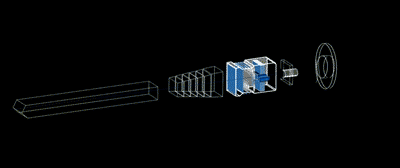
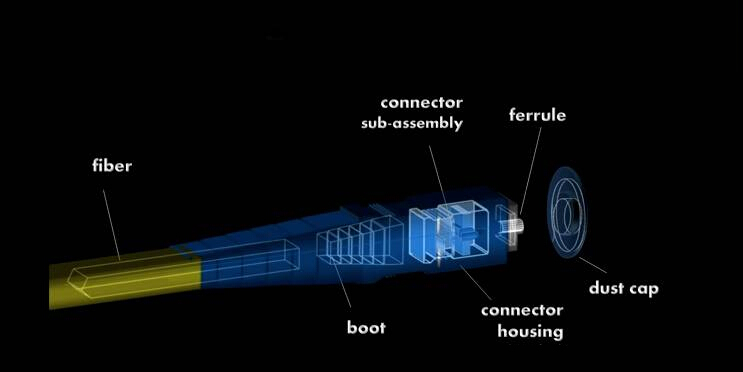
According to different applications, various connector types are optional, such as LC or SC for transceiver connection, FC for ODF (Optical Distribution Frame) application, MPO/MTP for parallel fiber transmission, and so on.

There are three ferrule polish types of fiber optic connectors: PC (Physical Contact), UPC (Ultra Physical Contact) and APC (Angled Physical Contact). The different polish types result in different performance, especially in back reflection (return loss). In general, PC type is required at least 35dB return loss or higher; UPC is 50 dB or higher; APC is 60 dB or higher. See the picture below:
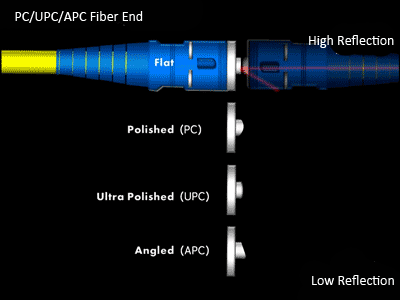
Fiber optic adapters are designed to connect two fiber optic patch cables together. When used to connect two same types of connectors, it also called coupler. The working principle is shown as below:
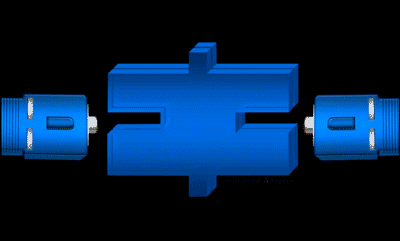
Similar to fiber optic connectors, they are divided into various types, including LC, SC, ST, FC, and so on. In addition, they can also be divided into single-mode and multimode, female and male versions according to the corresponding connectors.
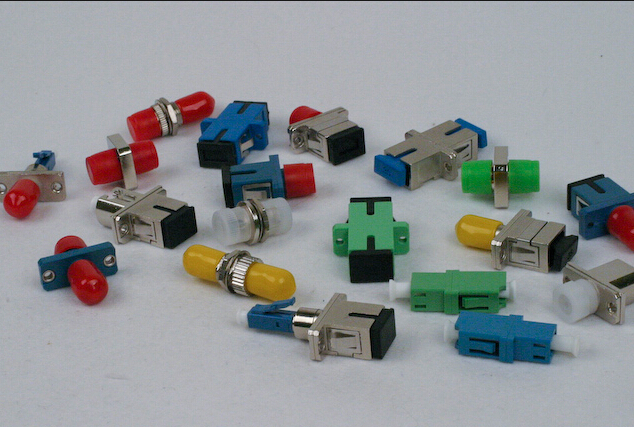
Thanks for reading! See you next week.





